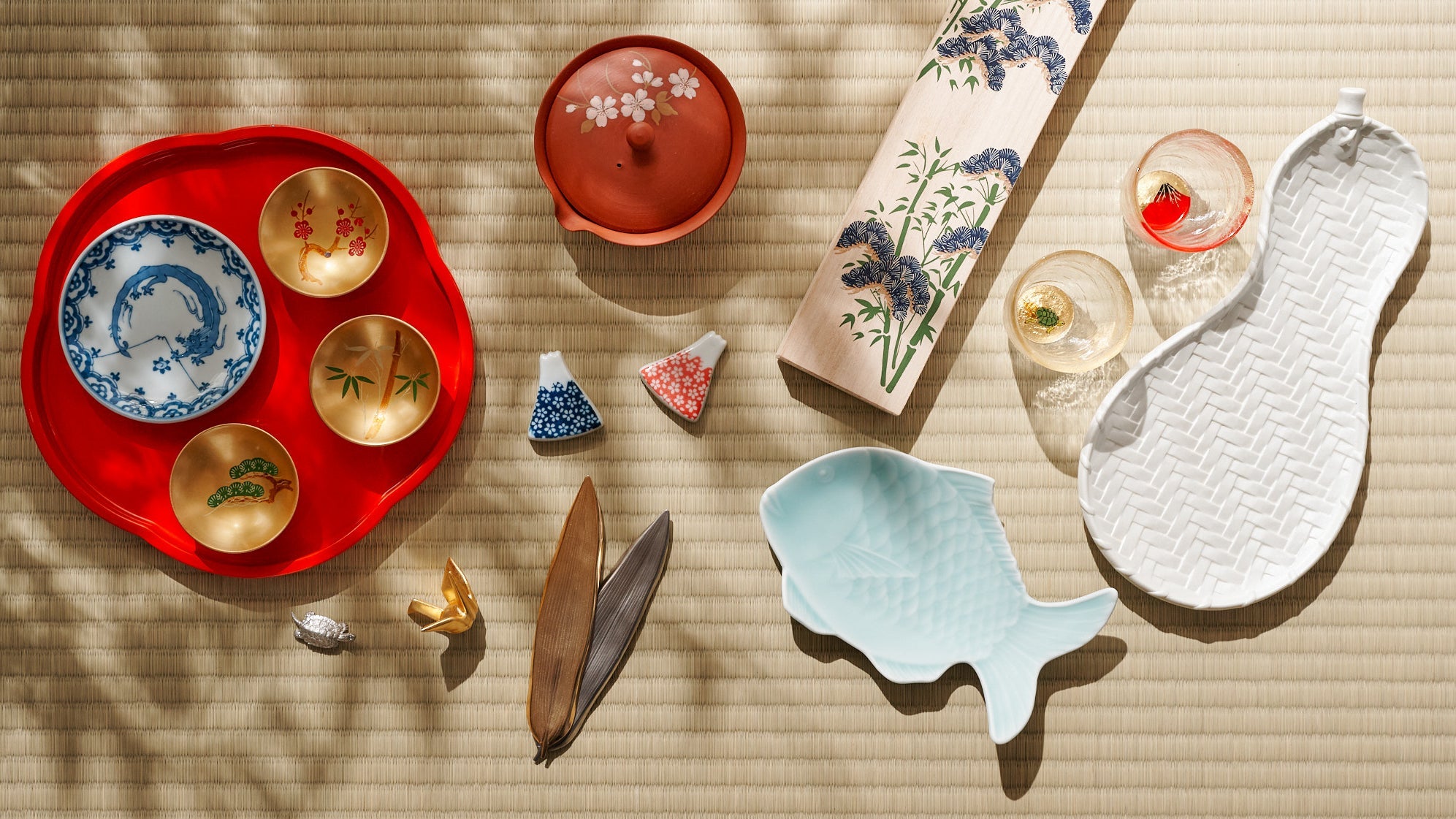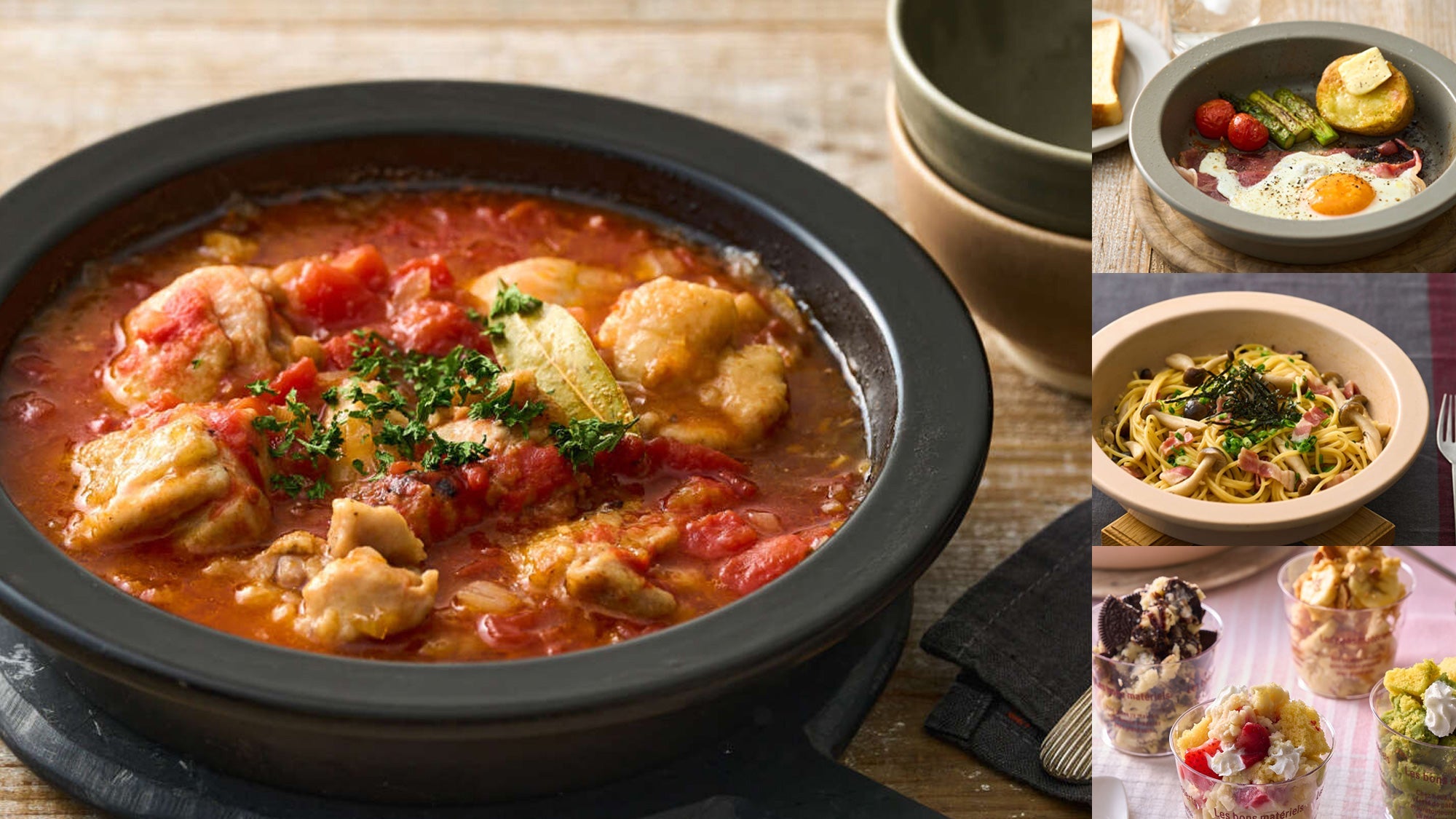
Guide to Japanese Bamboo Crafts
De Team MUSUBI
Since ancient times, bamboo has been deeply intertwined with Japanese life and culture. Beautiful bamboo groves have shaped the landscape, and bamboo’s remarkable properties have made it an indispensable material for everyday tools and art. Among the woods used in traditional Japanese crafts , bamboo stands out for its unique combination of strength, flexibility, and natural elegance. Its versatility has long inspired artisans to create objects that are both functional and visually pleasing.
Today, bamboo is being reappreciated not just for its cultural significance, but also for its sustainability and eco-friendliness. In this guide, we invite you to explore the history, unique appeal, and major production regions of Japanese bamboo craftsmanship—together with a curated selection of recommended bamboo pieces from MUSUBI KILN.
Table of contents
History of Japanese Bamboo Craftwork

The history of bamboo crafts in Japan stretches back thousands of years. Some of the earliest known examples include lacquered bamboo artifacts excavated in northern Honshu (present-day Aomori Prefecture), estimated to be over 2,000 years old. Bamboo’s lightweight yet strong structure, smooth surface, and natural resilience made it ideal for tools used in daily life—from baskets and fishing gear to kitchen utensils, tea ceremony implements, musical instruments, and even weapons. Its understated charm also made it favored for decorative objects like flower baskets and ceremonial items.
Japan is home to over 600 species of bamboo, a remarkable variety given the country’s diverse climate. Among these, madake, moso, and hachiku are considered the three most important types for time-honored craftwork. Each species offers different characteristics in strength, flexibility, and workability, making them suitable for specific applications—from robust construction to finely handcrafted tea whisks.

Over time, bamboo craft evolved beyond simple utility into an art form. In the Heian period (794–1185 CE), bamboo tools became essential elements in tea culture. During the Edo period (1603–1868 CE), regional centers such as Beppu in Oita and Katsuyama in Okayama developed their own distinctive styles. While many items remained practical, examples such as intricately carved flower vases and lattice windows in castles demonstrated bamboo’s aesthetic potential.
Today, bamboo continues to be a vital part of Japanese culture and craftsmanship. What was once a humble craft is now showcased as fine art in exhibitions both in Japan and around the world.
The Appeal of Bamboo — Nature’s Gift to Craftsmanship
Lightweight and Strong


Despite its lightness, bamboo has a strong and resilient structure. Its hollow, jointed form allows it to bend without breaking, making it both flexible and durable. This unique balance makes bamboo suitable for a wide range of applications—from delicate baskets to architectural elements.
Aging with Beauty
Japanese crafts are known to age gracefully , and bamboo is no exception. Over time, it develops a rich amber tone and subtle sheen that reflect the passing years and the care of its user. Much like fine leather, its surface deepens in color and character with continued use. Rather than keeping it tucked away, bamboo is meant to be used and enjoyed in everyday life. As it ages, it becomes more personal and more irreplaceable, growing alongside you as a companion in your daily rituals.
Repairable and Long-Lasting
Bamboo crafts are not only durable but also repairable. If a piece cracks or chips, a skilled craftsman can often restore it—especially when the original maker is known. A repaired item carries both its original beauty and a new story, making bamboo ware a lifelong companion.
Sustainable and Renewable
Bamboo is one of the fastest-growing plants in the world, reaching maturity in just three to five years. Unlike hardwoods that take decades to grow, bamboo can be harvested frequently with minimal environmental impact. Its low carbon footprint and rapid regrowth make it an ideal material for eco-conscious craftsmanship.
Major Production Areas of Japanese Bamboo Crafts
Beppu, Oita Prefecture
Beppu is one of Japan’s most renowned bamboo craft centers, known for its mastery of henso—a technique that weaves thin, flat bamboo strips into intricate shapes. With eight foundational weaving methods and over 200 possible patterns, Beppu Bamboo Craft was designated a Traditional Craft of Japan in 1979. These carefully crafted pieces are more than functional—they age gracefully, deepening in color and luster over time. Whether used daily or admired in the home, they bring quiet warmth and enduring charm to any setting.
Kyoto
Blessed with ideal growing conditions and centuries of craftsmanship, Kyoto is home to some of Japan’s finest bamboo. The area’s wide temperature fluctuations contribute to the growth of strong, elegant stalks used in kyomeichiku—bamboo specially processed using traditional techniques such as fire-roasting. Kyoto’s bamboo is prized for its smooth surface, durability, and resistance to warping. From tea utensils and flower vases to interior design elements, Kyoto’s bamboo works reflect both aesthetic refinement and deep-rooted tradition.
Suruga, Shizuoka Prefecture
Suruga Bamboo Basketry, known as Suruga Takesensuji Zaiku, is a traditional craft with over 400 years of history, originating near Shizuoka City. Designated as a national traditional craft in 1976, it is said to have begun with a court aristocrat’s search for refined baskets and later flourished through falconry commissions from Tokugawa Ieyasu. Characterized by its use of exceptionally fine, round bamboo strips—crafted so carefully as not to harm even the delicate feathers of a bird—Suruga basketry combines visual delicacy with strength and durability. Its graceful lines and rich amber patina deepen with time, making each piece a lifelong companion in daily life.
From Tradition to Everyday Use: Featured Bamboo Crafts
At MUSUBI KILN, we offer a curated selection of exquisite bamboo crafts that reflect the artistry passed down through generations of Japanese makers:
Handmade Bamboo Chopsticks
Bamboo chopsticks are easy to handle, offering just the right amount of flexibility and lightness. With tips that grip food almost as if they were clinging to it, and bamboo’s natural antibacterial and anti-mold properties, they have long been loved and widely used in Japan.
The Ganko Bamboo Chopsticks, a long-selling product by Yamachiku, a bamboo chopstick manufacturer based in Kumamoto Prefecture, are a popular choice at MUSUBI KILN due to their ease of use. Yamachiku selectively harvests bamboo one by one from the surrounding mountains, combining handcraftsmanship with machine processing to produce chopsticks made entirely from domestically sourced bamboo.
Bamboo Lunch Boxes
Lightweight yet durable, bamboo lunch boxes are easy to carry—even when full. Their natural breathability helps keep food fresh, and bamboo’s antibacterial properties protect against spoilage. Beyond lunch, they also serve as lidded storage containers for small items.
Based in lush, coastal Oita Prefecture, Nanpu Kougei crafts its products using high-quality bamboo grown locally in nature-rich surroundings. While preserving traditional techniques, the workshop embraces modern innovations to create functional, beautifully made bamboo ware. Each piece is carefully handcrafted by skilled artisans whose expertise has been refined over generations.
Bamboo Baskets
Among the many traditional bamboo crafts, this handwoven basket remains a timeless favorite. Made from natural bamboo strips, its softly rounded rim fit comfortably in the hand, offering a warm and organic feel. Whether used to serve fruit or bread at the table or to store everyday items, it adds a breezy, elegant touch to any interior setting.
Made exclusively from high-quality bamboo grown in Oita Prefecture, baskets combine the natural charm of bamboo with a refined, graceful design.


Bamboo Trays and Serving Ware
Lightweight and elegant, This tray is a fine example of Suruga Bamboo Basketry. Its delicate craftsmanship reflects the exceptional skills of Suruga artisans. The surface features an intricate pattern reminiscent of hemp leaves, while the rim is assembled with slender, circular bamboo strips, creating an artful design.
Perfect for serving classic Japanese sweets to guests, it brings a sense of refinement rooted in Japanese aesthetics. Not only suitable for everyday use, it can also be displayed on a wall or stand as a decorative art piece. A thoughtful gift for special occasions, this tray is sure to delight.
Living with Bamboo
Japanese bamboo craft is more than a tradition—it is a living art form. As the world embraces sustainability and mindful living, bamboo offers a quiet connection to nature in daily life.
Celebrated today as both craft and contemporary art, bamboo reflects Japan’s mastery of form, technique, and spirit. Each piece, shaped by hand, carries not only function but also a philosophy—one of simplicity, impermanence, and harmony.
We hope this guide has offered a glimpse into the many expressions of Japanese bamboo artistry, and the timeless charm found in every detail.
















Dejar un comentario
Este sitio está protegido por hCaptcha y se aplican la Política de privacidad de hCaptcha y los Términos del servicio.